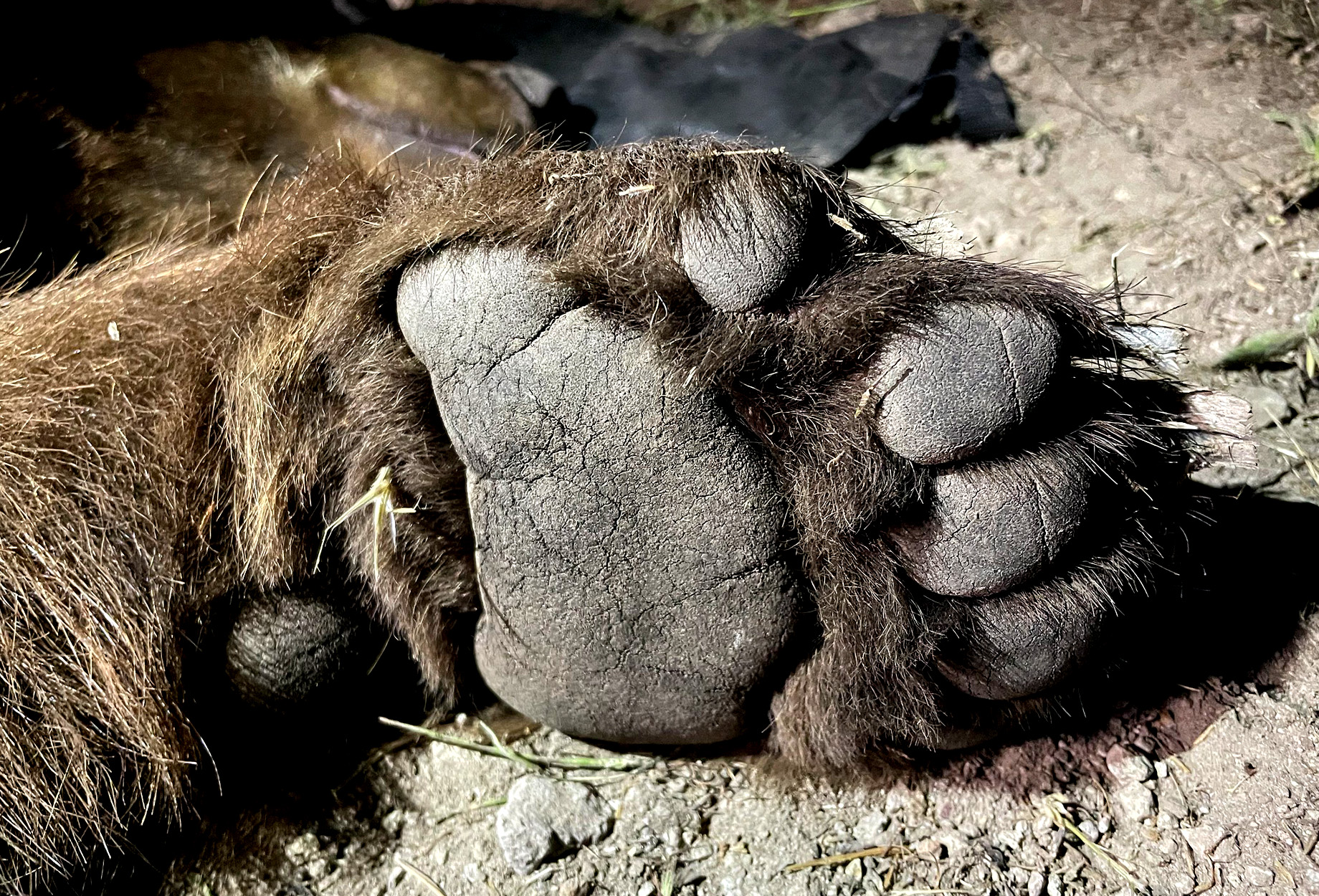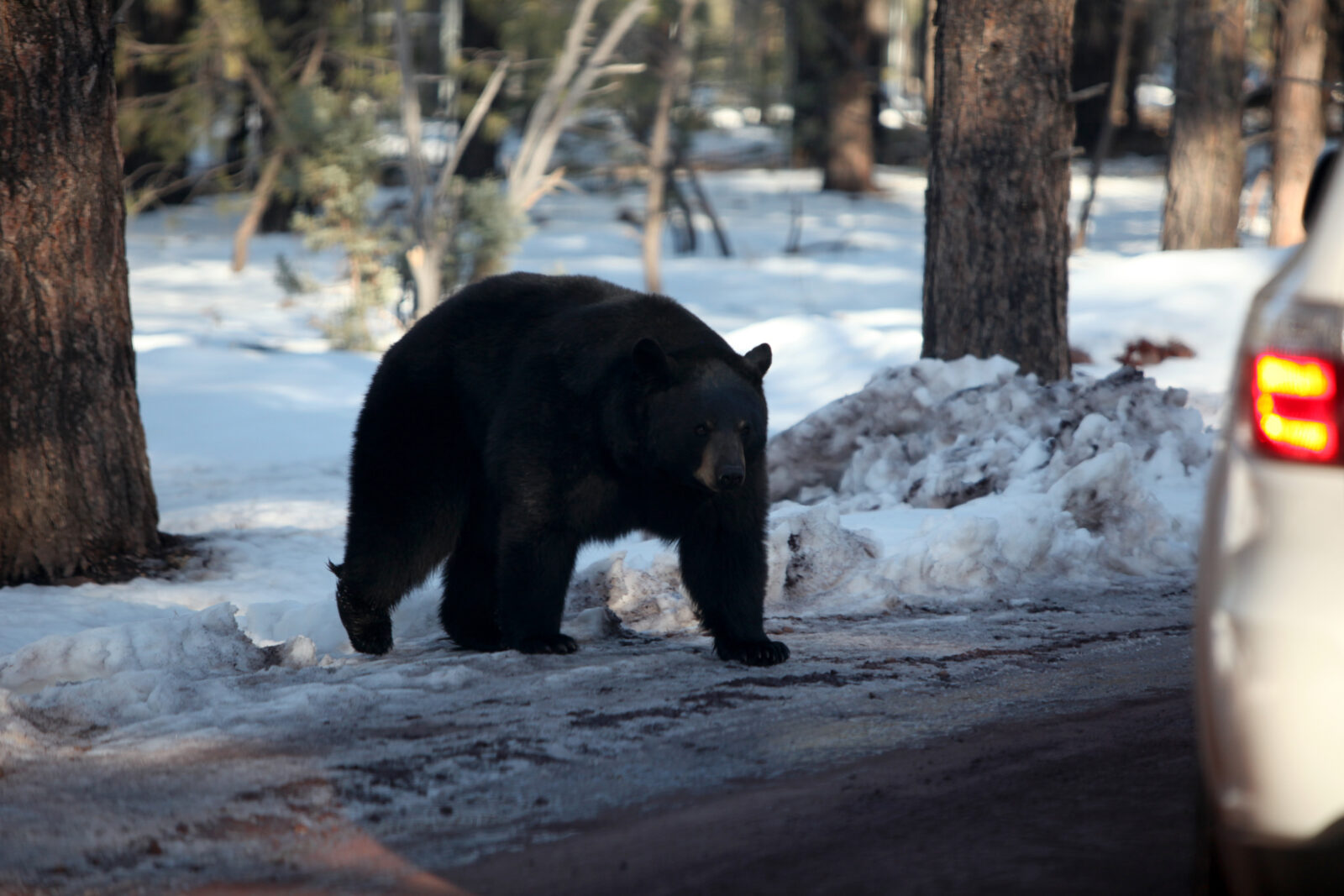In the serene town of Gatlinburg, Tennessee, a series of unsettling events involving black bears have captured national attention. These encounters, often caught on camera, have led to controversial decisions by wildlife authorities.
In a town known for its natural beauty and close proximity to the Great Smoky Mountains National Park, the delicate balance between wildlife and human safety is increasingly difficult to maintain.

Escalating Encounters: The Incidents
The recent spate of bear sightings and interactions in Gatlinburg has raised alarm among both locals and wildlife officials. One incident that went viral involved a black bear approaching a woman and her child outside Bearskin Lodge.
The bear’s boldness, characterized by sniffing and even touching the woman, is not typical of wild bears, which generally avoid human contact. Tennessee Wildlife Resources Agency (TWRA) officials pointed out that such behavior often indicates a bear has become accustomed to humans, typically due to feeding by humans, either directly or indirectly through unsecured garbage.
In another alarming incident, a bear entered a concession stand at Anakeesta, a popular local attraction, and lunged at an employee. As WHJL reports, no one was injured, but the bear’s lack of fear of humans was a clear indicator of habituation, which usually leads to dangerous interactions.

Why Euthanasia?
The euthanization of these bears has sparked public outcry and confusion, with many questioning why relocation isn’t a viable option. According to the TWRA, once bears become habituated to human food, they lose their natural fear of humans, increasing the risk of aggressive behavior. This habituation makes relocation ineffective, as bears often return to the same areas seeking easy food sources.
TWRA spokesperson Matthew Cameron told Knox News that even in remote areas, the presence of humans poses a risk, and relocating bears that are accustomed to humans often leads to further dangerous encounters.

Human Responsibility and Bear Safety
Experts and officials stress that these incidents are not merely about bear behavior but also about human responsibility. Bears are naturally attracted to easy food sources, and unsecured trash, bird feeders, and pet food often become unintended lures.
The city of Gatlinburg has implemented BearWise Basics, which include not feeding bears, securing garbage, and removing bird feeders when bears are active, WATE reports. Violating these guidelines can lead to fines and legal consequences, emphasizing the seriousness of the situation.
Marlee Montgomery, facilitator of the Smoky Mountains BearWise Taskforce, highlighted the need for community cooperation in reducing bear-human encounters.
“Eliminating garbage as a food source is vital to reducing these interactions,” Montgomery told WATE. “The city and the taskforce are committed to finding better ways to coexist with our incredible black bears.”
What Can Be Done?
Preventing these tragic outcomes requires a multifaceted approach. Public education campaigns are essential, as is strict enforcement of existing laws regarding feeding wildlife. The introduction of bear-resistant trash containers throughout Gatlinburg and surrounding areas is a critical step in reducing attractants, Hellbender Press reports. However, officials acknowledge that achieving a significant reduction in bear-human conflicts will require a cultural shift among residents and visitors alike.
The TWRA and local officials continue to advocate for responsible behavior around wildlife.
Janelle Musser, a TWRA biologist, told WJHL that people should never approach or feed bears. “Bears are best appreciated from a distance. Close encounters not only endanger people but also the bears, as habituated bears often face euthanasia.”

A Call to Action
The recent euthanizations of black bears in Gatlinburg are a stark reminder of the consequences of human actions on wildlife. While these events are tragic, they also present an opportunity for increased awareness and action. Ensuring that bears remain wild and unaccustomed to human food sources is crucial for the safety of both the animals and the community.
As Montgomery told WATE, “We need everyone to take part in this effort. It’s about protecting these magnificent creatures and ensuring that future generations can enjoy them in their natural habitat.”
This article by Matthew Russell was first published by The Animal Rescue Site. Lead Image: PHOTO: PEXELS – RELOCATING HABITUATED BEARS IS OFTEN NOT A VIABLE OPTION.
What you can do
Help to save wildlife by donating as little as $1 – It only takes a minute.







Leave a Reply